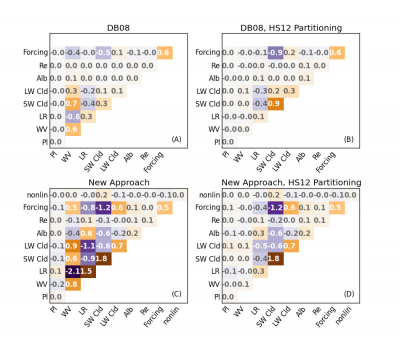Why do Climate Models Disagree?
Equilibrium climate sensitivity (ECS, the global-averaged surface warming after doubling CO2) is one of our main indicators of the severity of climate change. Differences in ECS predictions by global climate models (GCMs) are often used as a proxy for uncertainty about climate change. In this study, we decompose the spread in ECS for 20 GCMs participating in Phase 5 of the Coupled Model Intercomparison Project into terms related to individual feedback and forcing mechanisms. Like previous studies, we find shortwave cloud feedback to be the dominant source of spread in ECS. Our study is the first to formally decompose ECS spread into constituent terms, however, and we are also able to show that covariance between forcing and cloud feedback as well as between albedo and shortwave cloud feedback and between lapse-rate and longwave cloud feedback are important. These findings are important because they identify previously-unexplored pathways to reducing uncertainty about climate change.
We would like to acknowledge the modeling groups, the Program for Climate Model Diagnosis and Intercomparison (PCMDI) and the World Climate Research Program’s Working Group on Coupled Modeling for their roles in making available the CMIP3 and CMIP5 multi-model datasets. Thanks also goes to Thomas Reichler for making his WMO tropopause code publicly available. Support of these datasets is provided by the U.S. Department of Energy (DOE) Office of Science. This work was supported by the Office of Science (BER) at Lawrence Livermore National Laboratory under Contract DE-AC52-07NA27344. All authors were supported by BER’s Regional and Global Climate Modeling (RGCM) Program.

